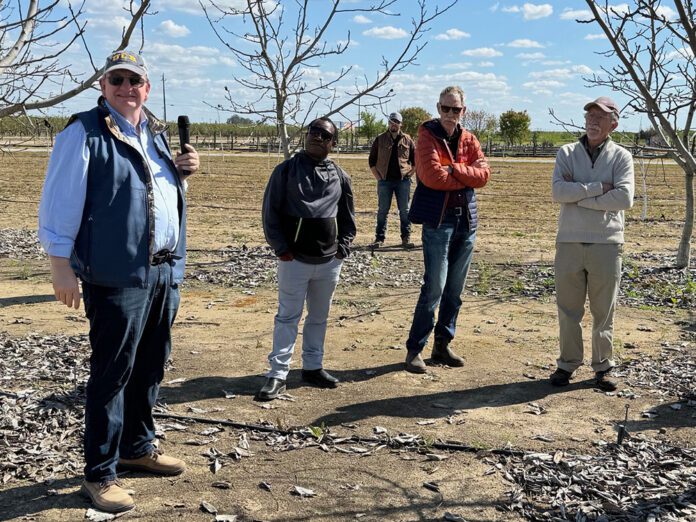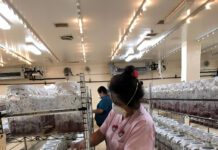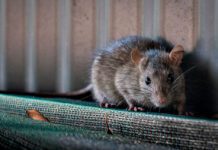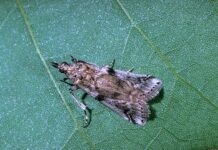
Dealing with plant-parasitic nematodes, in annual or perennial crops, means knowing management options, soil sampling techniques and identification of nematode species.
The California Nematology Workshop, held for the past 54 years, continues to address the threats parasitic nematodes pose for crop production while examining new control and identification methods.
Plant-parasitic nematodes are microscopic and transparent roundworms and are part of the most abundant species on earth. Plant-parasitic nematode species that can cause extensive damage in tree nut orchards are the root lesion nematode, root-knot nematode and ring nematode. Researchers at Oregon State University report root lesion nematodes enter root cells to feed and leave cells, killing metabolites and eggs. Cell death results in brown lesions on the roots and a weakened root system. Root-knot nematodes feed on root cells and cause the feeding area to swell into galls or knots, deforming the root system.
Nematodes are found on every continent on Earth. Only a small fraction of nematode species are plant-parasitic while most other nematode species feed on bacteria, fungi or other soil inhabitants.
While the percentage of plant-parasitic nematode species is small compared to bacteria- or fungi-eating species, UC researchers have estimated nematodes causing crop damage in California have infested thousands of crop-producing acres statewide.
Management of parasitic nematodes in perennial crops includes rootstock resistance or tolerance development for tree nut crops and preplant and post-plant soil treatments. Andreas Westphal, UC Riverside professor of nematology, said knowledge of feeding habits of parasitic nematodes can help with development of tolerance in tree nut rootstocks. Tolerance is the reaction of the plant to nematode infection. Tolerance or resistance to nematode damage is critical in crops that are in the ground for decades, Westphal said.
Developing rootstocks with tolerance to nematode feeding is an extended process that involves selection of hybrid genotypes, field planting and monitoring. After two years of testing, promising genotypes are transplanted for continued monitoring. From those, candidates are selected for grafting and intermediary study. Finally, candidates are selected for field trials.
Knowing the feeding habits of the nematode species and its interaction with the plant are where work can be done in development of resistance, Westphal said.
Preplant Options for Trees
Field studies on preplant options show water delivery of soil biofumigant Dominus results in high efficacy against root lesion nematode while another soil drench treatment (Salibro) has some nematode-suppressing capacity. Anaerobic soil disinfestation, Westphal said, is an effective soil treatment, and application simplification may be possible.
Use of biological nematicides for control can work, Becky Westerdahl, UC Davis nematologist, said. Registered active ingredients in several nematicides have been used in annual crops. Possible modes of action of these products can be stimulation of nematophagous fungi, competition for root surface and reduced stress on nematode-infested plants via improved soil structure, soil water retention and plant nutrition.
Nematodes are very diverse, Juie-in Yang, UC Riverside, reported, but nematophagous fungi, species that feed on plant-parasitic nematodes, are also diverse. Suppressive soil is a great source for biological control agents for plant-parasitic nematode. Entomopathogenic fungi might be an alternative source, she noted, but interactions between nematophagous fungi and nematodes are worth understanding to provide better screening and application insights.
Bacterivore and herbivore are the most abundant nematode species. There are more nematodes in areas with colder climates than warmer climates, Yang said.
Yang explained how plant-parasitic nematodes can be parasitized themselves by other nematode species. Nematophagous fungi develop sophisticated networks to trap nematode species, both beneficial and crop-damaging. In Taiwan, where Yang did research, she said a new fungal species is being evaluated for its effectiveness against an aggressive plant-parasitic nematode that threatens guava production. The emerging species has caused serious yield reduction in Brazil guava and can invade resistant cultivars.
Quarantines
CDFA is working to ensure burrowing and reniform nematode species do not become established in the state. Exterior quarantine is in place to prevent movement of uncertified plant material into the state. Heather Martin, CDFA plant pathologist, said a Meloidogyne species of concern has been found in California in limited distribution. Other harmful species have been found in incoming shipments of nursery stock.
Sergei Subbotin, senior nematologist at CDFA said molecular diagnostics are an important part of the management of plant-parasitic nematodes. Conventional methods for nematode identification rely on time-consuming analysis of several specimens while molecular methods provide accurate and alternative diagnostic approaches. Molecular diagnostics is the characterization of an organism based on information on its DNA or RNA structure.
An example of this accuracy is the discovery of the formerly unknown in California peach root-knot nematode in Merced and Kern County almond orchards.
Nematode sampling and interpretation are all about aggregation, Howard Ferris, UC Davis Dept. of Nematology, reported. Distribution in the soil is affected by feeding habits, reproductive strategies and the soil environment, including toxins and predators.
Ferris also developed and maintains a comprehensive nematode information website at http://nemaplex.ucdavis.edu.
Mike Stanghellini, director of research for TriCal, said there is a constant scramble by fumigator applicators to follow new state regulations for fumigant use in agriculture. Control options are becoming more limited as Cal EPA continues to tighten restrictions on fumigant applications. Contact nematicides cannot replace Telone in perennial crops. The fumigant chlopicrin degrades quickly and is less able to penetrate tree roots. Combinations are improving, but not there yet, Stanghellini said.
Additional rules for mitigating acute exposure to the fumigant Telone went into effect in January. Non-tarped high-rate uses in trees and vines will have some challenges, he said. The second phase of fumigant regulations now in progress is aimed at mitigating lifetime exposure to occupational bystanders and workers. The new bystander regulations will replace the ‘Telone township cap’ program. To address acute, seasonal, annual and lifetime exposure, Cal EPA is proposing a maximum rate of 332 lbs per acre with an acre limit of 2 to 80 per day. Minimum injection depth, soil moisture requirements and setback to occupied structures are also increasing.
The issue, Stanghellini said, is that Cal EPA has different toxicological end points than U.S. EPA that are many times lower.
Crop acres that can be tarped for fumigant applications are less impacted by the new rules, Stanghellini said, but there is additional cost for the plastic, and it also adds to the waste stream.

Cecilia Parsons | Associate Editor
Cecilia Parsons has lived in the Central Valley community of Ducor since 1976, covering agriculture for numerous agricultural publications over the years. She has found and nurtured many wonderful and helpful contacts in the ag community, including the UCCE advisors, allowing for news coverage that focuses on the basics of food production.
She is always on the search for new ag topics that can help growers and processors in the San Joaquin Valley improve their bottom line.
In her free time, Cecilia rides her horse, Holly in ranch versatility shows and raises registered Shetland sheep which she exhibits at county and state fairs during the summer.















